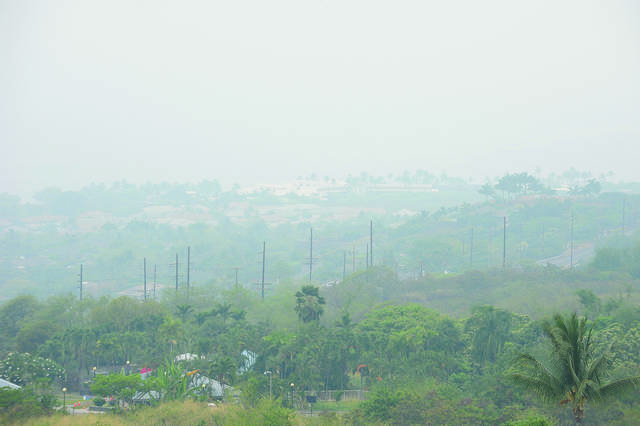KAILUA-KONA — Hawaii Island emergency responders now have access to real-time data from more than 30 additional areas on the island to make informed decisions about the air quality affected by volcanic activity.
The public can also view the data online by visiting www.epa.gov/kilaueaairdata or by clicking here.
The Hawaii Department of Health (DOH) collaborated with the Hawaii County Civil Defense Agency and the U.S. Environmental Protection Agency (EPA) to expand air quality monitoring capacity across the island.
“Working together with state and local public health and emergency management agencies, the EPA developed an online mapping tool that provides real-time air quality data near the volcanic activity,” said Mike Stoker, regional administrator for the EPA’s Pacific Southwest Office.
“These additional monitors will provide integral data for emergency management officials to make critical decisions each day to support response efforts, and for residents and visitors to make informed decisions for their personal health and safety concerns,” added Dr. Bruce Anderson, director of health.
The map viewer uses the county’s three-color public notification system (blue, orange and red), which recommends protective actions to be taken by responders and the public. The three-color system corresponds with established health guidelines.
The color air monitoring stations will change depending on the level of health risk. Blue indicates gas levels are healthy, orange indicates moderate levels and red indicates unhealthy conditions.
In addition to the DOH and EPA monitors, the National Park Service, U.S. Geological Survey (USGS) and South Coast Air Quality Management District in California also provided staff, equipment and monitors to the Hawaii Island network.
There are 15 new monitoring stations in place, which brings the total network to 34 stations. Monitors track sulfur dioxide (SO2), hydrogen sulfide (H2S) and particulate matter. Most monitors are placed around the active fissure area, but there are also monitors in the southern and western regions of the island.
The monitors provide real-time data on SO2 and H2S levels. The public viewer shows a map of the monitoring stations color-coded based on the average concentration of all data received over 30 minutes and is updated every time a new reading is received.
DOH and USGS have scheduled informational meetings to address questions on air quality. Kailua-Kona will host the first at 5:30 p.m. tonight at the West Hawaii Civic Center Council Chambers.
The second meeting will be held at 7 p.m. Thursday at Cooper Center in Volcano and the third at 5:30 p.m. on June 14 at Ocean View Community Center in Ocean View.
The public can access the USGS vog information dashboard online at https://vog.ivhhn.org/ or by clicking here.





Monitoring when the haze is making people sicker is wasteful.
It benefits only those index professionals.
Reinforce treatment clinics and health centers.
Provide face masks at minimum in the interim.